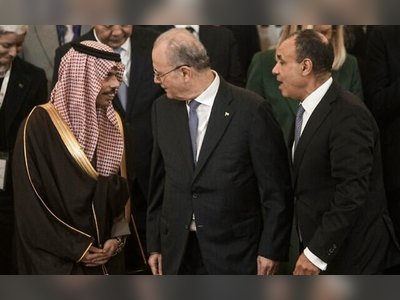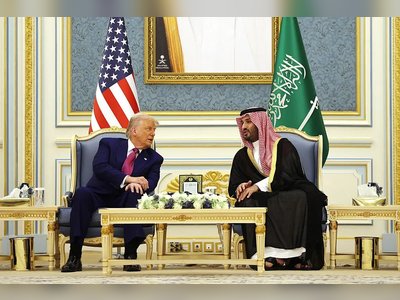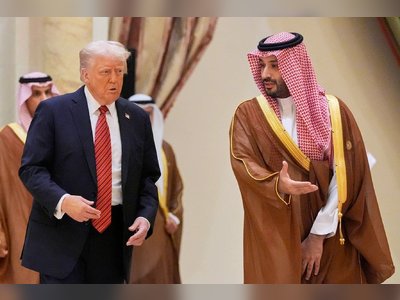Saudi Crown Prince Receives Letter from Iranian President Ahead of U.S. Visit
Mohammed bin Salman welcomes diplomatic overture as he prepares for high-stakes talks in Washington
A diplomatic message from Masoud Pezeshkian, President of Iran, arrived in the hands of Mohammed bin Salman, Crown Prince of Saudi Arabia, one day before the latter embarks on his landmark visit to the United States.
According to the Saudi Press Agency, the letter—delivered on Monday—was received by the crown prince ahead of his Washington meetings with U.S. President Donald Trump and other senior officials.
The Saudi statement did not elaborate on the contents of the correspondence nor indicate whether it was linked to the forthcoming summit in Washington.
The visit itself is expected to focus on expanding Saudi-U.S. cooperation in oil, security, commerce, technology and potentially civilian nuclear energy.
This trip marks the first visit to the United States by Mohammed bin Salman since the 2018 killing of Saudi journalist Jamal Khashoggi in Istanbul, an event that triggered a global uproar and challenged Riyadh’s international standing.
U.S. intelligence concluded that the crown prince approved the capture or killing of Khashoggi; the Saudi government denies he ordered the operation but says he holds ultimate responsibility.
The timing of the letter from Tehran introduces an additional layer to the diplomatic choreography.
As Riyadh and Washington ready to deepen ties, the outreach from Iran may reflect regional recalibrations taking place in parallel.
Previous high-level contacts between Saudi and Iranian officials have included phone calls and meetings aimed at stabilising Gulf tensions after the 2023 China-brokered restoration of ties.
Analysts suggest that the letter highlights the crown prince’s strategic posture ahead of Washington’s talks.
By accepting Iran’s overture, Saudi Arabia signals not only its willingness to engage neighbouring powers, but also its arrival in the U.S. context as a more autonomous actor crafting multiple regional linkages.
Whether the letter will influence the U.S. discussion remains unclear, but it underlines Riyadh’s high-stakes balancing act: securing advanced military, technological and economic partnerships with Washington while maintaining independent regional diplomacy.
The coming days will reveal whether the Washington agenda addresses Iranian-Saudi diplomacy in any form and whether the letter serves as a symbol of shifting dynamics across the Middle East.
According to the Saudi Press Agency, the letter—delivered on Monday—was received by the crown prince ahead of his Washington meetings with U.S. President Donald Trump and other senior officials.
The Saudi statement did not elaborate on the contents of the correspondence nor indicate whether it was linked to the forthcoming summit in Washington.
The visit itself is expected to focus on expanding Saudi-U.S. cooperation in oil, security, commerce, technology and potentially civilian nuclear energy.
This trip marks the first visit to the United States by Mohammed bin Salman since the 2018 killing of Saudi journalist Jamal Khashoggi in Istanbul, an event that triggered a global uproar and challenged Riyadh’s international standing.
U.S. intelligence concluded that the crown prince approved the capture or killing of Khashoggi; the Saudi government denies he ordered the operation but says he holds ultimate responsibility.
The timing of the letter from Tehran introduces an additional layer to the diplomatic choreography.
As Riyadh and Washington ready to deepen ties, the outreach from Iran may reflect regional recalibrations taking place in parallel.
Previous high-level contacts between Saudi and Iranian officials have included phone calls and meetings aimed at stabilising Gulf tensions after the 2023 China-brokered restoration of ties.
Analysts suggest that the letter highlights the crown prince’s strategic posture ahead of Washington’s talks.
By accepting Iran’s overture, Saudi Arabia signals not only its willingness to engage neighbouring powers, but also its arrival in the U.S. context as a more autonomous actor crafting multiple regional linkages.
Whether the letter will influence the U.S. discussion remains unclear, but it underlines Riyadh’s high-stakes balancing act: securing advanced military, technological and economic partnerships with Washington while maintaining independent regional diplomacy.
The coming days will reveal whether the Washington agenda addresses Iranian-Saudi diplomacy in any form and whether the letter serves as a symbol of shifting dynamics across the Middle East.







